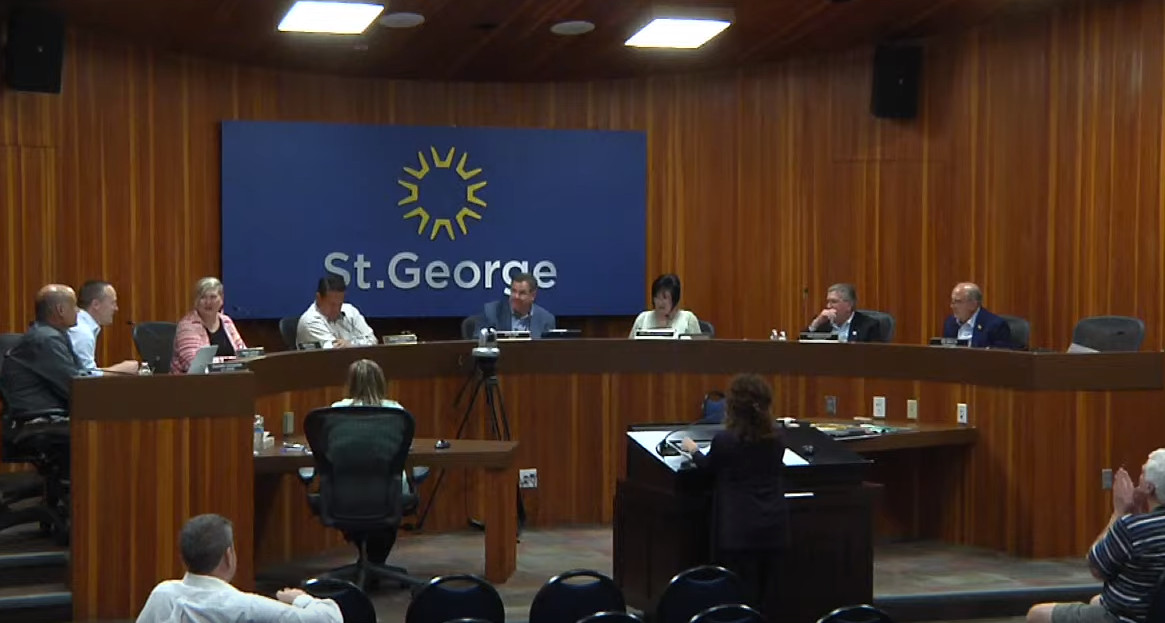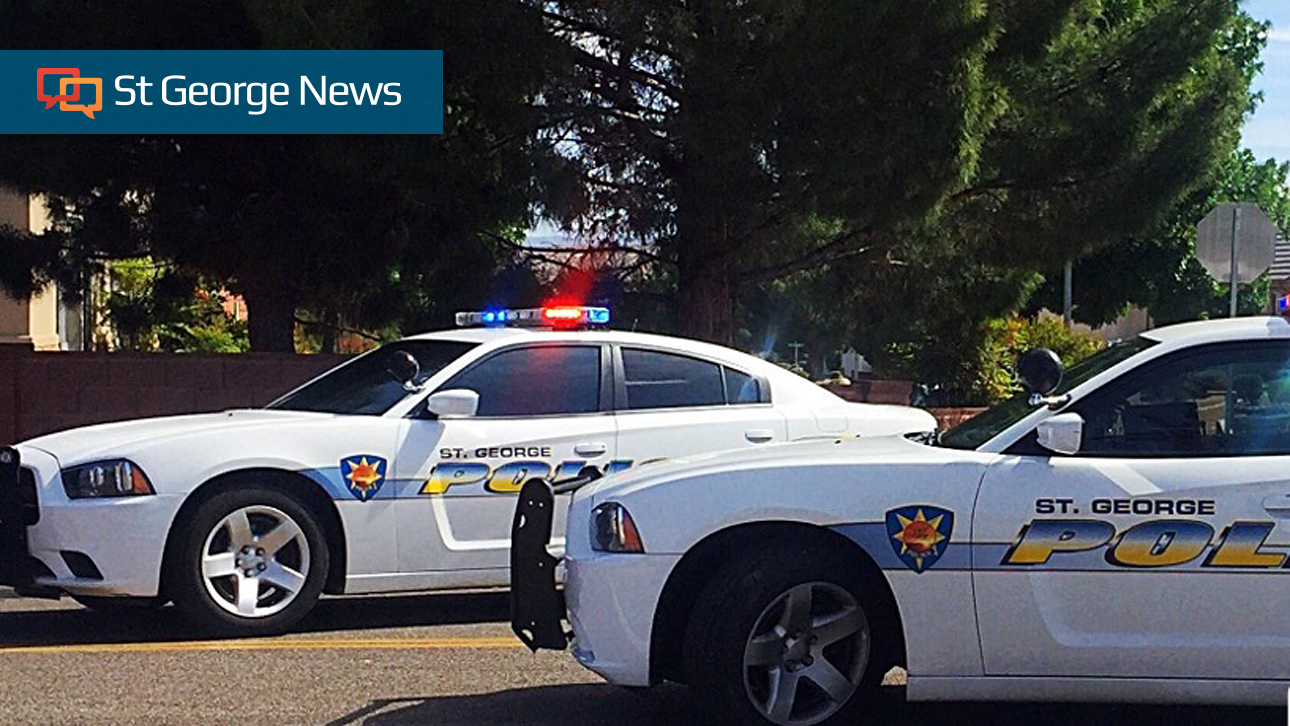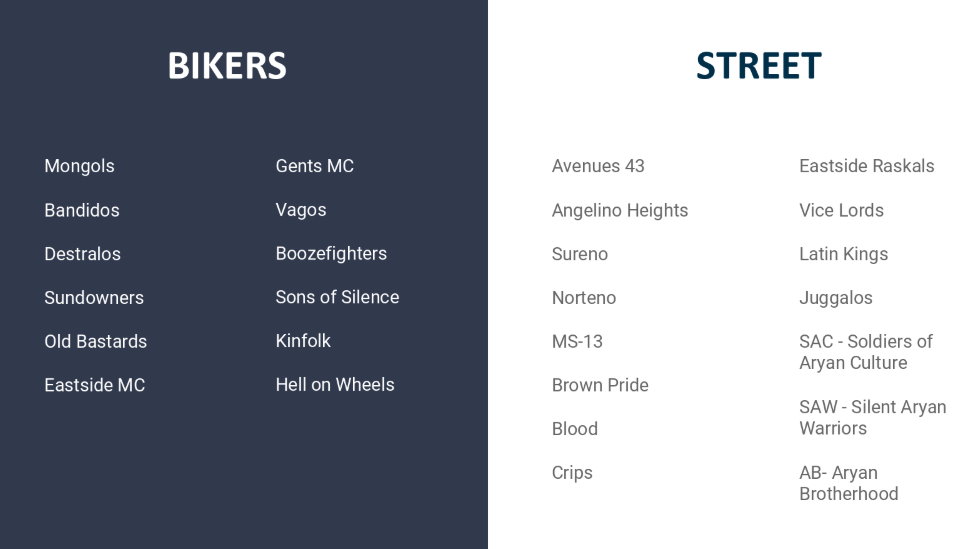
ST. GEORGE — Gangs, fraud, forgery and vice are the primary focus of the Crimes and Fraudulent Activity Suppression Team of the St. George Police Department.

Otherwise known as the Police Department’s gang unit, two members of “CFAST” gave the St. George City Council a review of how they handled gangs and related activity during a council meeting Thursday night.
As the two officers who gave the presentation also work undercover as a part of their roles with the gang unit, St. George News has chosen to refer to them as Officer A and Officer B.
The gang unit came into being around 20 years ago, Officer A told the council, and dealt with a rise in gang-related activity in the earlier 2000s that has since been largely suppressed thanks to collaborative efforts between the police and other agencies and institutions.
As the gang unit’s work progressed, they found drugs and gangs went hand-in-hand, and they collaborated with the county’s drug task force on investigations and arrests.
The unit also partnered with federal agencies in a nationwide operation to crack down on violent gang members in the county illegally. The gang unit focused on routing out suspected gang members though instances of identity theft and fraud, something that proved to be an effective approach that has been recognized by the federal government.
“We have issues like any other city,” St. George Mayor Jon Pike said. “Do we have drugs and gang members here? Yes we do, but we also know who they are and where they live.”
Street and biker gangs
Officer B said two types of gangs are present in St. George: street gangs and biker gangs.
Street gangs would apply to well-known gangs like the Bloods and the Crips, while popular biker gangs include the Hells Angels and Bandidos motorcycle clubs.
While St. George saw a rise in street gang activity in the early 2000s, suppression efforts coordinated between the gang unit, school resource officers and Washington County School District has helped keep the gang activity – which generally starts in the school and grows from there – to a minimum.
“A lot of where we see our street gangs is in our schools,” Officer B said.
Some kids will think it’s cool to form a gang and to adopt a name and certain colors to go with it, Officer B said. These groups end up getting into fights and even start selling drugs; however, the officer said they are usually identified by the police rather quickly.

The school resource officers and gang unit keep an eye on suspected gang activity, while the school district enforces a dress code that restricts the wearing of gang colors.
The suppression efforts aim to keep the gangs from forming in the schools and branching outward. The gang unit is also aware of gang members who move into the area yet are not currently active with any particular group.
However, the officers said the street gangs aren’t the largest concern.
“Some of the bigger problems we see locally are with our bikers,” Officer B said.
St. George is home to various motorcycle club chapters, including known biker gangs. While Officer B said he wouldn’t classify all of the motorcycle clubs known to have a presence in the city as a “gang,” the classification maintained by the state differs.
The state identities a gang as a group of three or more people who wear the same colors, go by the same moniker, use the same signs and symbols and are believed to be involved in a particular set of crimes.
Those crimes include drug trafficking, assault, sex offenses, human trafficking, burglary, robbery, fraud, identity theft, money laundering, racketeering, bribery and witness and victim tampering.
Because motorcycle clubs like the Bandidos and Mongols have been involved in these types of crimes on a national scale, they are classified as gangs. This has led to the St. George Police Department applying the same classification to local chapters of those clubs due to their association.
Certain motorcycle clubs identity themselves as so-called “outlaw” clubs, calling themselves “One percenters” and wearing patches signifying that claim.

The phrase “one-percenter” has been around since the Hollistor Riot, which took place in Hollister, California, in 1947. A large motorcycle rally was held in the town, and a small faction of the attendees caused a commotion. Though the incident was relatively minor, sensationalized media coverage helped spur negative opinions towards motorcyclists and led the American Motorcyclist Association to say that 99 percent of riders are law-abiding citizens, while the “one percent” are the troublemakers. The term has since been embraced by the outlaw biker lifestyle.
Other motorcycle clubs don’t wear the one-percenter patch yet may still associate with the one-percenters and adopt a similar patch layout that shows the name of their club, a club mascot and the location they claim as their chapter’s home ground.
Due to known rivalries between certain biker gangs, Officer B said the gang unit keeps a close eye on the local chapters of those clubs.
Fraud and forgery
In 2005, U.S. Immigration and Customs Enforcement launched Operation Community Shield as a way to ultimately remove violent gang members from the United States. The St. George Police Department partnered with the federal government in this effort.
“One thing we found all these gang members have in common is they’re looking for work,” Officer A said. “In order to get work in the United States, you have to obtain identification cards to verify they are legally able to work.”
Suspected gang members were buying fraudulent documents, and police have worked with local businesses in order to obtain those documents as a part of their investigations. Once a connection to the fake documents and a violent gang member is made, Homeland Security is contacted, and they remove the suspect individual.
“It’s not like we’re going out looking for just anybody,” Officer A said. “We’re going after the violent ones.”
This approach has been recognized by the federal government and taught to other law enforcement agencies across the country.
Vice
While some say prostitution isn’t a big deal, as it takes place between consenting adults, Officer A said that perception is wrong.
Gangs have cornered the market on prostitution, he said.
Prostitution has a seemingly low risk of detection compared to running drugs or guns, Officer A said. It also involves a “renewable commodity,” as a person can be dragged into prostitution for various reasons. Simply put, a person is more easily replaced than lost guns or confiscated drugs.
A person can end up involved in prostitution through means of force, fraud or coercion, which can also lead to cases of human trafficking, Officer A said.
“We work vice in town specifically for human trafficking,” Officer A said.
The officers referred to a recent case now entering the court system involving a man who coerced a local 17-year-old girl into human trafficking.
Councilwoman Bette Arial asked the officers if police should be contacted about instances that look suspicious – such as someone who may seem out of place.
Officer A said they get calls from hotels where staff members believe they may have seen potential evidence of prostitution or human trafficking. The calls are investigated accordingly.
Calling authorities regarding suspicious activity in general is encouraged by law enforcement, as calling on something that looks relatively minor, yet still odd, could help prevent a crime.
Individuals seeking to report suspected gang activity can do so anonymously by calling 435-627-4373. The Crimes and Fraudulent Activity Suppression Team can also be reached at [email protected].
Copyright St. George News, SaintGeorgeUtah.com LLC, 2019, all rights reserved.